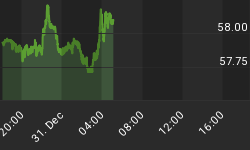The good news is:
• New lows have dried up on both exchanges.
• All of the Summation indexes are moving upward.
In the late 80's I did research on NYSE new lows and found them to be the best indicator of bottoms. When there were a lot of new lows (250 was a lot at that time) there was always a re-test of the price low in 2 to 6 weeks. That pattern of re-testing the old low failed in the late 90's. On May 10 there were 845 new lows on the NYSE suggesting a likelihood of a re-test sometime between now and late July. However, most of the new lows in May were fixed income issues which were not traded 15 years ago. Still we should consider the possibility of a retest which would mean a 3.5% decline on the S&P 500 (SPX) and 6% on the Russell 2000 (R2K).
The new low indicator is a 10% trend (19 day EMA) of new lows plotted on an inverted Y axis.
The chart below shows 3 years with the SPX in red along with new low indicators for the NYSE in green and the NASDAQ in blue. The indicators move in very similar patterns with the movements of the NYSE indicator exaggerated relative to the NASDAQ indicator, that exaggeration is especially apparent in the recent low. At the recent low there were 845 new lows on the NYSE and 124 on the NASDAQ, usually the numbers are a lot closer, for example, on August 23, 1990 there were 707 new lows on the NYSE and 831 on the NASDAQ. So the case for a re-test is not as strong as it might have been because of the fixed income component of NYSE breadth data.

The two charts below offer similar views of different data.
In the first chart the indicator is calculated by subtracting momentum of new lows from momentum of new highs. New highs and new lows have been calculated on the component issues of the S&P mid cap index over the past 6 weeks (rather than 52 weeks as reported by the exchanges). Except for the rally off the lows of last August, the indicator is as high as it has been in the past year. Every high in the indicator has been followed by a modest decline. The indicator lags a little so last Wednesday's high could have been the price high for the next week or two.

The indicator for the next chart is calculated by subtracting momentum of downside volume from momentum of upside volume and is more responsive than the high low indicator shown above. The indicator in this chart reached a high for the year last Monday.

The market is overbought for the short term, but, unlike last week, gets no help from seasonality.
I expect the major indices will be lower on Friday June 11 than they were on Friday June 4.
Last week the blue chip indices were up slightly for the week while the small cap indices were down slightly so I am calling last weeks forecast a draw.
















